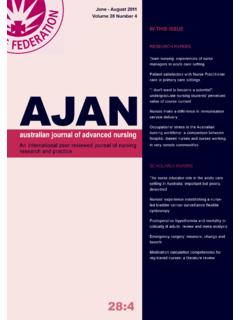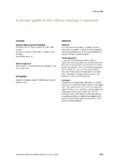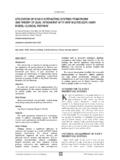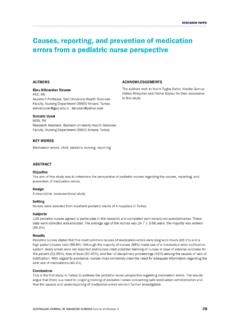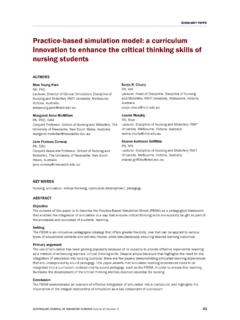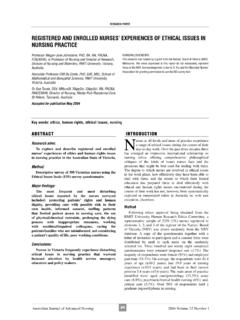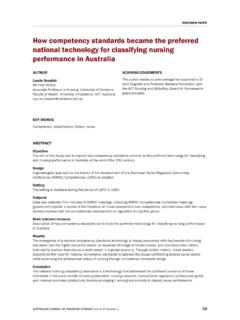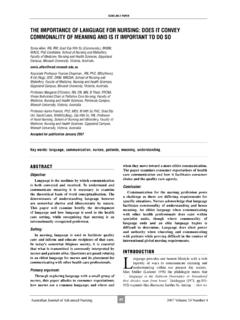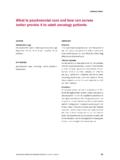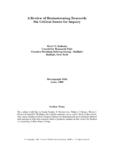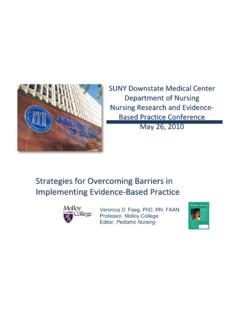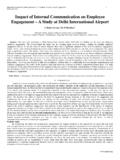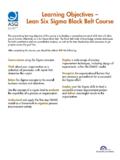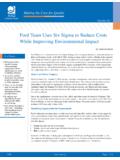Transcription of The changing role of practice nurses in Australia: …
1 AUSTRALIAN JOURNAL OF ADVANCED NURSING Volume 26 Number 116 AUTHOR Jane Mills PhD, RN Senior research Fellow (NHMRC), School of Nursing and Midwifery, Monash University, Gippsland Campus, Churchill, Victoria, australia . Mary FitzgeraldPhD, RN Professor of Nursing, School of Nursing, Midwifery and Nutrition, James Cook University, Cairns Campus, Smithfield, Queensland, australia . Acknowledgement This research study was facilitated by a Primary Health Care research , Education and Development Fellowship, School of Medicine, James Cook University, Townsville Campus, Queensland, WORDSA ustralia; general practice ; nurse in general practice ; practice nurse ; cervical screeningABSTRACTO bjectiveThe original aim of the study was to report on the methods used to develop a new model of service delivery, namely nurse led well women s clinics.
2 However participants identified several key barriers to an expansion of their role that had not been accounted for in either the original policy directive or in the continuing professional development delivered as preparation for their accreditation to deliver cervical screening services from a general medical practice . How the group addressed these barriers became the objective of this action research paper reports the findings from an action research study with three registered nurses working in general The changing role of practice nurses in australia : an action research studypractice credentialed to provide cervical screening services. Six reflective group meetings were held over a six month time frame facilitated by the lead researcher.
3 During the meetings a variety of creative techniques were used to stimulate discussion, The meetings were audio recorded and partially transcribed. Feedback from the concurrent data generation and analysis was provided to participants the following regional division of general practice . SubjectsThree registered nurses employed by the general medical outcomes measuresThe barriers identified by participants in the process of implementing change in their clinical practice to incorporate the provision of cervical screening were three themes identified in the findings from this study that related to the myth of interdisciplinary collaboration in general practice .
4 These were: nurses in general practice renegotiating their roles ; identifying and negotiating gendered patterns of cervical screening; and multidisciplinary collaboration and retention of practice nurses . Another important outcome of this study that relates to change management is the role of practice champions in implementing new models of primary potential role of nurses in general medical practice in australia has broadened considerably in recent years, mainly due to Australian Government driven initiatives which reward general practitioners for employing nurses ; a recognition by the nursing profession that general practice nursing is a specialist area of nursing practice ; the establishment of a national professional association for nurses working in general practice .
5 An increase in the availability of continuing professional development for nurses working in general practice ; and additional Medicare Benefit Schedule (MBS) item numbers relating to general practice nursing, which gives the general practice a rebate for the services the nurse provides independently of the general practitioner. Suggestions are made that address the barriers identified by participants in the process of implementing change in their clinical practice to incorporate the provision of cervical screening PAPERAUSTRALIAN JOURNAL OF ADVANCED NURSING Volume 26 Number 117 INTRODUCTIONIn recent times, there has been a rapid development of the role of nurses working in general medical practice in australia .
6 Between 2004 and 2006 the number of nurses working in general practice grew by 23% (Australian General practice Network 2006), closely tied to a number of funding initiatives by the Australian Government (Keleher et al 2007; Porrit 2007); a recognition by the nursing profession of general practice as a specialist area of nursing practice ; the establishment of a professional nursing association for practice nurses ; and the availability of continuing professional development opportunities for nurses working in general practice ( practice nurses ). Extended roles for nurses with concomitant allocation of Medicare Benefit Schedule (MBS) item numbers have promoted greater autonomy in clinical practice for nurses and an opportunity to contribute to an increasingly multi professional team approach to general practice services in australia .
7 Medicare is australia s publicly funded universal health insurance scheme however rebates for services provided are generally only available to medical practitioners. Additional item numbers have recently been introduced which attract rebates for services provided for and on behalf of general practitioners by nurses and other allied health practitioners. The provision of MBS item numbers for practice nurses means that the general practice receives a rebate for the services provided by the practice nurse . This assists in offsetting the cost of employing the practice of these initiatives has enabled nurses in general practice to undertake cervical screening.
8 This paper reports on the findings from an action research study undertaken with nurses in general practice who had been recently credentialed as cervical screeners. The original aim of the study was to report on the methods used to develop this new model of service delivery, namely nurse led well women s clinics. However participants identified several key barriers to an expansion of their role that had not been accounted for in either the original policy directive or in the continuing professional development delivered as preparation for their accreditation to deliver cervical screening services from general practices .
9 How the group addressed these barriers ultimately formed the body of this action research study which was limited by a six month timeframe. Despite the short time frame, some interesting issues were identified by the group which exposed the cultural underbelly of general practice and which can be used to inform the ongoing process of reform in general practice in METHODA ction research is a research methodology that typically begins with a concrete problem in practice (Carr and Kemmis 1986). Cycles of observation, critical reflection, action and evaluation lead to a modification of actions in the form of action plans, which are subject to ongoing cycles of modification until the original problem is addressed (McNiff and Whitehead 2006).
10 In this study, the authors acted as facilitators for a reflective group of co researchers. A series of questions, adapted from Winter and Munn Giddings (2001), were used to stimulate reflection on issues of concern agreed to by the group: What else is having an impact on this issue in the practice ? How else may this problem be viewed? Why do others behave the way they do? How do I feel about this and what do these feelings tell me about what is going on? What else do I need to find out before making a judgement?In 2005 the Division of General practice where the study was undertaken recruited six nurses to undertake a continuing professional development program that led to credentialing to undertake cervical screening.
